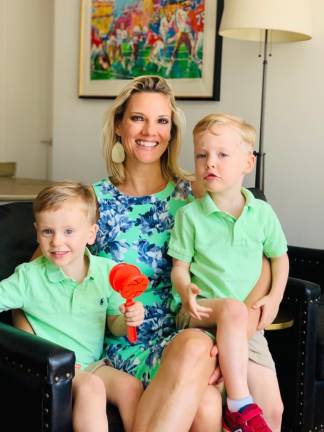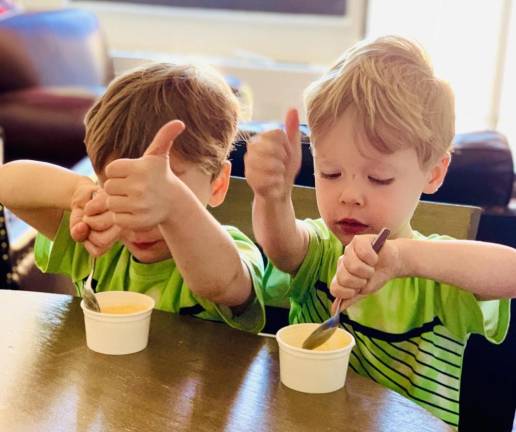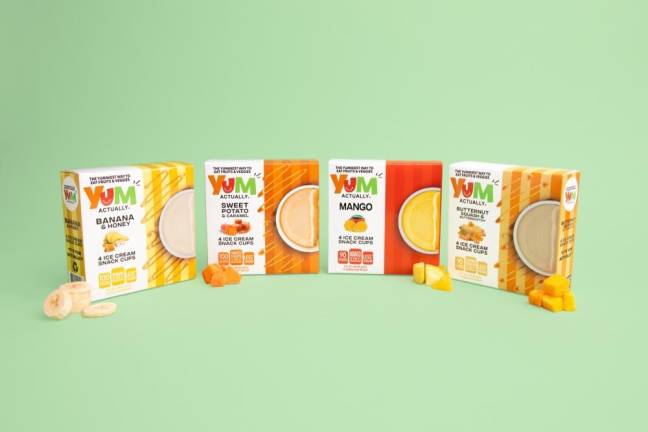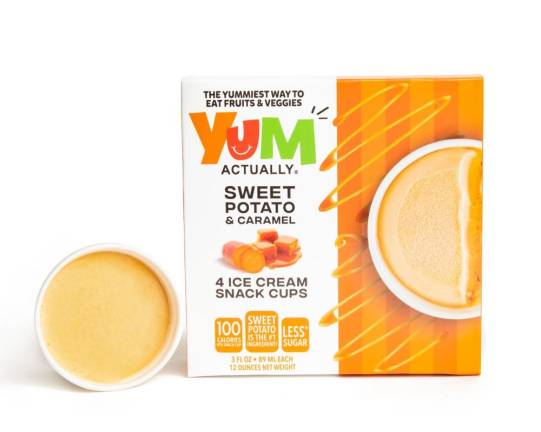Her Daughter Wasn’t Eating Fruits and Vegetables. She Started an Ice Cream Company to Solve the Problem
How an Upper East Side mom’s idea blossomed into a business called Yum Actually




At the age of four, Nicole Frankel’s daughter entered a maddening phase of childhood development, one which turned meal-prep into a daily test of ingenuity: she refused to eat any fruits and vegetables. The new phenomenon initially stumped Frankel, an Upper East Side mom with a background in financial technologies, as none of the typical tactics of persuasion seemed to be working. Suddenly, though, Frankel found a solution, which has since blossomed into a business.
“I tried just about everything to get her to eat more, until a light bulb went on,” Frankel recalled. “I said, ‘I’m going to turn fruits and vegetables into something that I know she won’t refuse: her favorite food, which is ice cream.’” Hence, Yum Actually was born, a healthy ice cream brand designed specifically for children.
The main ingredient in each of Frankel’s four ice cream flavors — mango, sweet potato and caramel, banana and honey, and butternut squash and butterscotch — is a fruit or vegetable, with a full serving of produce in each cup. All recipes are low in sugar and gluten-free, yet still decadent enough to decidedly feel like a treat.
“I had a mom that said, ‘I love that it’s healthy and it’s all natural and we use clean ingredients, but it’s indulgent, too,’” Frankel said. “It’s not one of these desserts which has five calories, zero sugar, and zero taste. This is an indulgent, tasteful ice cream, but I think that ... it’s all about learning about portion control.”
To encourage moderation, Frankel is intentional with her unique packaging, as the ice cream comes in cups rather than pints, with four cups per box. Despite her self-described “entrepreneurial spirit,” Frankel did not create the packaging, nor anything else about Yum Actually, entirely on her own, as she has been working with Darryl David of Darryl’s Ice Cream Solutions since the early stages of her project.
Frozen Joy
Now a consultant, David has devoted his adult life to ice cream, having once owned a store himself. He has witnessed the product’s evolution firsthand, from premium to super-premium, and has worked in myriad fields, from equipment, to formulation, to packaging. While immersed in the world of frozen joy, however, he began to recognize a disconnect between those who wanted to start businesses and those who knew how to get products on the market. David founded Darryl’s Ice Cream Solutions to bridge the gap for people just like Frankel, in whose company he has great faith.
“I’ve probably talked more people out of business than into business. Based on information people are giving me, I can honestly tell them if they’re going in the right direction, if it’s the taller challenge or not, the bigger ladder,” David explained. Of the many proposals, Yum Actually piqued his interest, striking him as a viable and creative business idea.
Indeed, Frankel approached David in part because she knew that there was a gap in the market — there are plenty of better-for-you ice creams lining the shelves, but few if any of them are targeted specifically toward kids. Yet even Frankel’s economic background and detailed market assessment could not have prepared her for the early months of running Yum Actually, which first entered stores in February of 2020, or, in more topical terms, the month before the COVID-19 pandemic descended upon New York City and rendered grocery shopping a terrifying activity.
Frankel was forced to stop demoing the product — when demoing, one enters a store, hands out samples, gets customers’ opinions — as COVID-19 cases began to surge, meaning that she was unable to get her brand-new product into the mouths and minds of potential consumers. Despite the unexpected complications, Frankel found resilience, even additional drive, among the chaos.
“Times of Hardship”
“Something I learned right around the time when COVID hit was that people eat more ice cream in times of hardship,” Frankel said. “It kind of gave me the motivation I needed to keep pounding the pavement as best as possible and keep sending COVID-friendly samples to people, to keep showing up at stores in a bodysuit, in gloves, in two masks.” She managed to get into dozens of stores during the height of the pandemic and is now in about 70 throughout the city.
Even as she plans to expand the business by adding new flavors, Frankel intends to remain in the tristate area for the foreseeable future, a strategy she calls “going hard in her own backyard” and recommends to anyone trying to start a food business, particularly in a vibrant urban area like New York City. Leaving one’s home city means dealing with additional costs, like shipping and distribution, and having less control over the product’s image.
David agrees, saying that “there’s no doubt that this is poised to be national, to be everywhere. But we have transportation, we have warehousing, we have product support ... The product interest is there, so I can say honestly that if the opportunity presented [itself], and if it made sense from a price point, the business could expand. Everything is in place. How to do it smartly and economically is the way to do it.”
Even as she plans to expand the business by adding new flavors, Frankel intends to remain in the tristate area for the foreseeable future, a strategy she calls “going hard in her own backyard.”